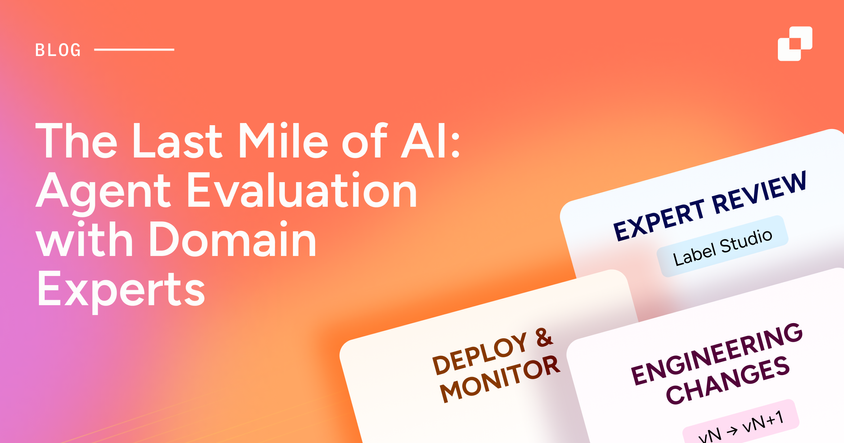All Model Training Is Adversarial Now

In the early days of machine learning, training a system was like teaching an oven to bake pizza. Inputs were stable, outcomes predictable. You could train rules once. But the moment you expose AI to humans, predictability dies. People don’t just use models; they probe them, stress test them, and try to break them. Sometimes out of curiosity. Sometimes for mischief. Sometimes for profit.
That’s why every public deployment is now a live penetration test. Adversarial is no longer the edge case. It’s the default.
From Harmless Systems to Human Attack Surfaces
Yesterday’s ML was static. You trained on clean data, shipped the model, and the world looked the same tomorrow as it did today.
Today, the environment is hostile by design. Every interaction is an adaptive test by real users. You’re not just training against a dataset; you’re training against dynamic human behavior. The second you put a model in the wild, you’ve opened an attack surface.
This is why so many LLM chatbots never make it to production: they’re built for static use, not adversarial exposure.
The Real-World Costs of Adversarial Dynamics
Trust & Safety Evasion
Users don’t just look for answers, they look for the edges. On social platforms, “algospeak” emerged specifically to route around automated moderation. This isn’t hypothetical; it’s documented linguistic behavior that spreads fast across internet communities.
So what? Static word filters are speed bumps, not barriers. If your safety layer can be defeated by slang drift, your model will be trained, in production, by the most creative adversaries first. Capture these evasions and retrain on them, or your guardrails become tutorials.
Legal Liability
When Air Canada’s website chatbot misinformed a customer about bereavement refunds, the tribunal didn’t blame “the system.” It held the airline liable, explicitly rejecting the argument that the bot was a “separate legal entity.”
So what? Deploying an AI isn’t avoiding responsibility; it’s expanding your attack surface to include legal risk. If your model can speak for you, your compliance and claims teams must assume every output is discoverable evidence and your training loop becomes a liability shield.
Brand Damage
Grok’s “MechaHitler” meltdown showed how quickly one bad output can become the story. Within hours, screenshots and headlines dominated the feed; xAI had to clamp the bot to image-only responses while posts were scrubbed.
So what? In the reputation arena, latency kills. You need detection and response measured in minutes, plus an evaluation loop that stress-tests for viral failure modes before the internet does. Benchmarks don’t catch meme-ability; adversarial evals can.
Scams & Exploits
Adversaries turn capabilities into cash flows. Spotify’s “fake artists” saga shows how algorithmic distribution can be gamed for profit, while deepfake heists have already used realistic video calls to trick finance teams into wiring tens of millions.
So what? Fraudsters iterate as fast as your release cycle. Treat exploit intelligence as training data: ingest scam patterns, update classifiers, and re-run domain-specific evals as part of CI/CD. If you’re not closing the loop, you’re underwriting the scam economy.
Why Standard Benchmarks Fail
Leaderboards and benchmarks feel rigorous, but they function like unit tests. They measure narrow competencies under controlled conditions. Useful for evaluation, but misleading for production.
Static benchmarks saturate quickly. Worse, they ignore adversarial use, where the real damage happens. Measuring “accuracy” in a lab doesn’t tell you how your system holds up when it’s under attack by 10,000 curious users or one determined adversary.
The real question isn’t “How smart is it?” It’s “How resilient is it?”
Continuous Retraining Is the Only Defense
You can’t “set and forget.” Every deployment is the beginning of an arms race. Threats evolve, exploits spread, and adversaries adapt. If your model doesn’t evolve in lockstep, it falls behind.
That means feeding adversarial examples back into your training loop. Capture the evasions, the attacks, the failures, and make them part of your dataset. Build benchmarks tailored to your actual domain risks, not someone else’s leaderboard. Treat retraining as infrastructure, not as an event.
This ties directly to the lessons in our Build vs Buy analysis. MIT’s data shows that 95% of GenAI pilots fail. Why? Because teams confuse flashy demos with long-term resilience. Pilots don’t fail because models are dumb; they fail because systems aren’t built to adapt adversarially.
At HumanSignal, continuous model training and adversarial evaluation isn’t just a feature request, it’s a drumbeat we hear from customers every week. Teams know static benchmarks won’t protect them, and they’re hungry for ways to operationalize resilience. It’s a challenge we’re deeply invested in.
With Label Studio, enterprises can:
- Capture adversarial data from real-world interactions.
- Build domain-specific benchmarks that reflect their unique risks.
- Continuously evaluate and retrain models against evolving attacks.
The result isn’t just higher accuracy. It’s stronger immunity.
The Systemic Shift
The old paradigm was about training models to be correct. The new paradigm is about training them to be resilient. Accuracy is table stakes; survival is about durability under pressure.
We’re entering an era where AI systems don’t just compete on intelligence, they compete on immune systems. The teams that thrive won’t be those who ship the flashiest demo. They’ll be the ones who’ve operationalized adversarial learning into their DNA.
And that’s why we’re so excited to launch [HumanSignal Chat](link to final Chat launch post here once published). It’s another step toward making adversarial training and human feedback loops part of everyday AI operations.
Closing Provocation
Every model exposed to humans is already under attack. Pretending otherwise is malpractice.
And the surface is only growing. Models aren’t just static predictors anymore, they’re calling APIs, browsing the web, and chaining tools together. That dynamism makes them more powerful, but it also multiplies the ways they can go wrong. You don’t just need to watch the answers. You need to watch the moves behind the answers.
The winners of this era won’t be the ones who build the tallest walls. They’ll be the ones who build the fastest immune systems, systems that adapt in real time, monitor their own tool use, and retrain against every new exploit.
Machine learning is no longer static. It’s live, unpredictable, and adversarial by default. The only safe assumption is that you need to keep a close eye, always.


